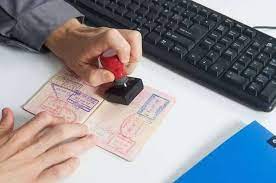Introduction
Traveling to India is a dream for many people around the world. However, sometimes this dream can turn into a nightmare when your Indian visa application gets rejected. It can be frustrating and confusing, but there are steps you can take to address the situation and increase your chances of getting approved in the future.
Why Was Your Indian Visa Rejected?
There are several reasons why your Indian visa rejected. Some of the common reasons include incomplete documentation, insufficient funds to cover your stay, a criminal record, inconsistencies in your application, or a previous overstay in India. It’s essential to carefully review the rejection letter to understand the specific reason for the denial.
- Did you provide all the required documents?
- Do you have sufficient funds to support your trip?
- Have you ever been convicted of a crime?
- Were there any discrepancies in your application?
What to Do After Your Visa Rejection?
If your Indian visa application has been rejected, don’t panic. Here are some steps you can take to address the situation:
- Review the Rejection Letter: Carefully read the rejection letter to understand the reason for the denial. This will help you identify any mistakes in your application and prevent them from happening in the future.
- Seek Professional Help: Consider consulting with an immigration lawyer or visa consultant to review your application and provide guidance on how to proceed. They can help you understand the reasons for the rejection and advise you on the next steps to take.
- Reapply for the Visa: Once you have addressed the issues that led to the rejection, you can reapply for the Indian visa. Make sure to correct any mistakes in your application and provide additional supporting documents if necessary.
- Provide Additional Information: If the rejection was due to insufficient funds or other financial reasons, consider providing additional information or evidence to support your financial stability. This could include bank statements, income tax returns, or a letter from your employer.
- Appeal the Decision: In some cases, you may have the option to appeal the rejection decision. You will need to follow the appeal process outlined in the rejection letter and provide any additional information or documentation requested.
Conclusion
Having your Indian visa application rejected can be a disappointing experience, but it’s essential to remain calm and take proactive steps to address the situation. By reviewing the rejection letter, seeking professional help TYPES OF INDIAN E VISA, and taking corrective actions, you can increase your chances of getting approved in the future. Remember to double-check your application, provide all the required documents, and be honest in your responses to avoid any potential issues. Traveling to India is a wonderful experience, and with the right approach, you can turn your visa rejection into a successful approval.
